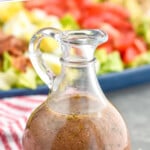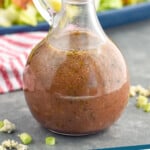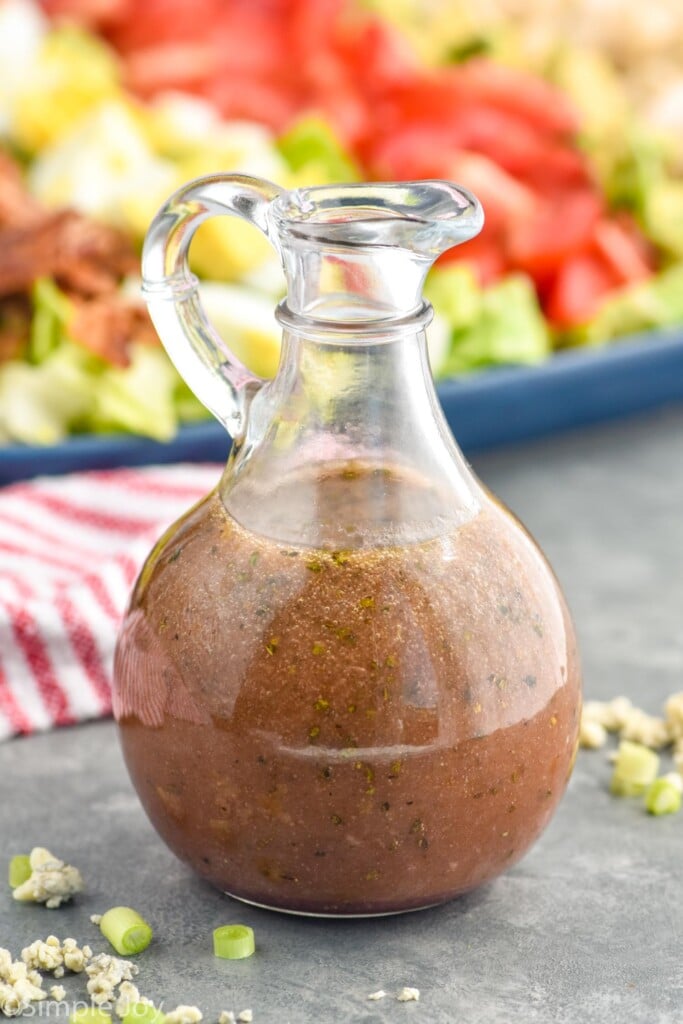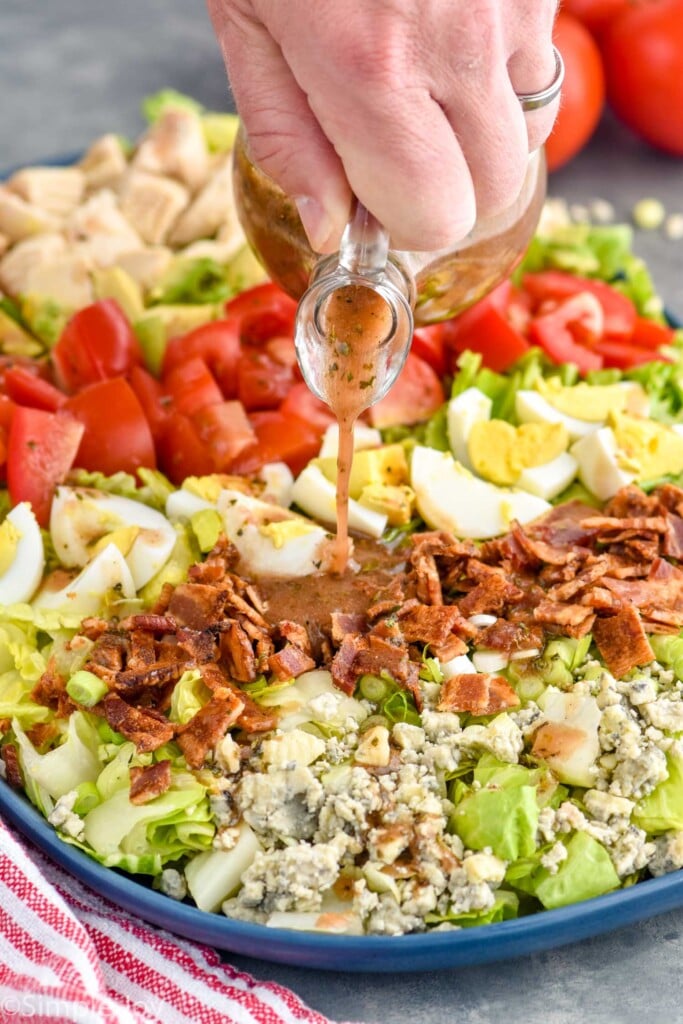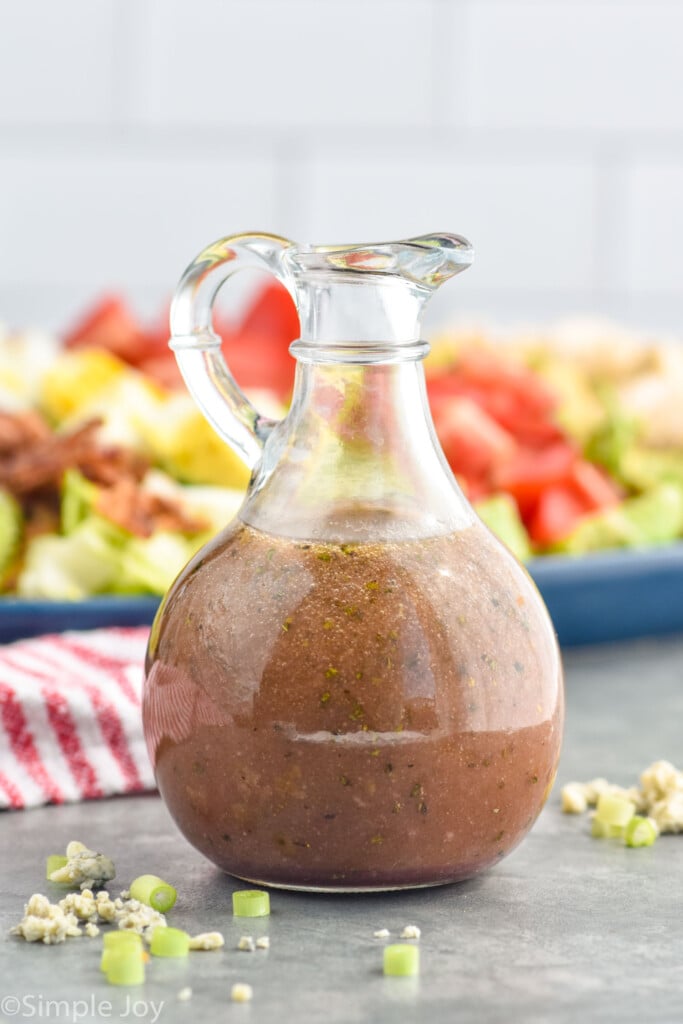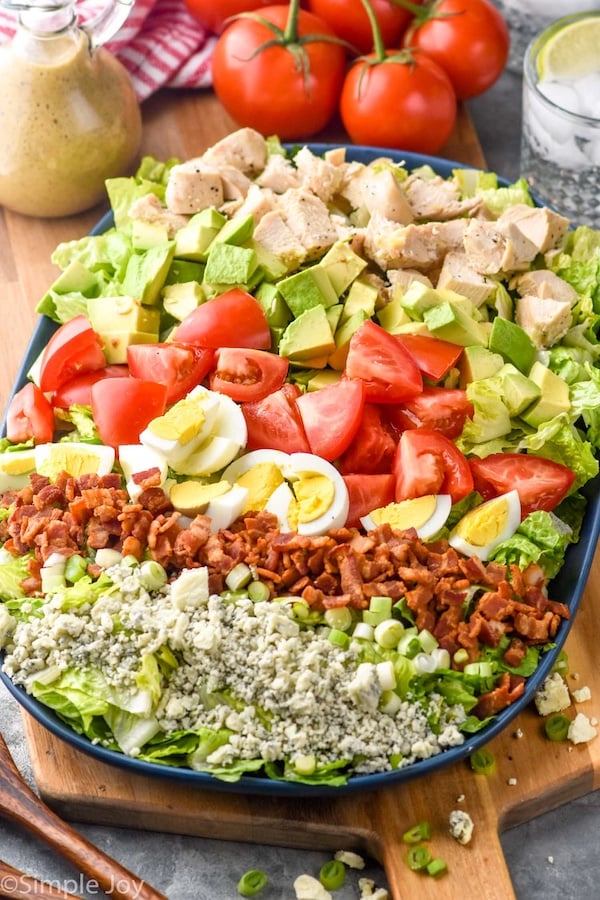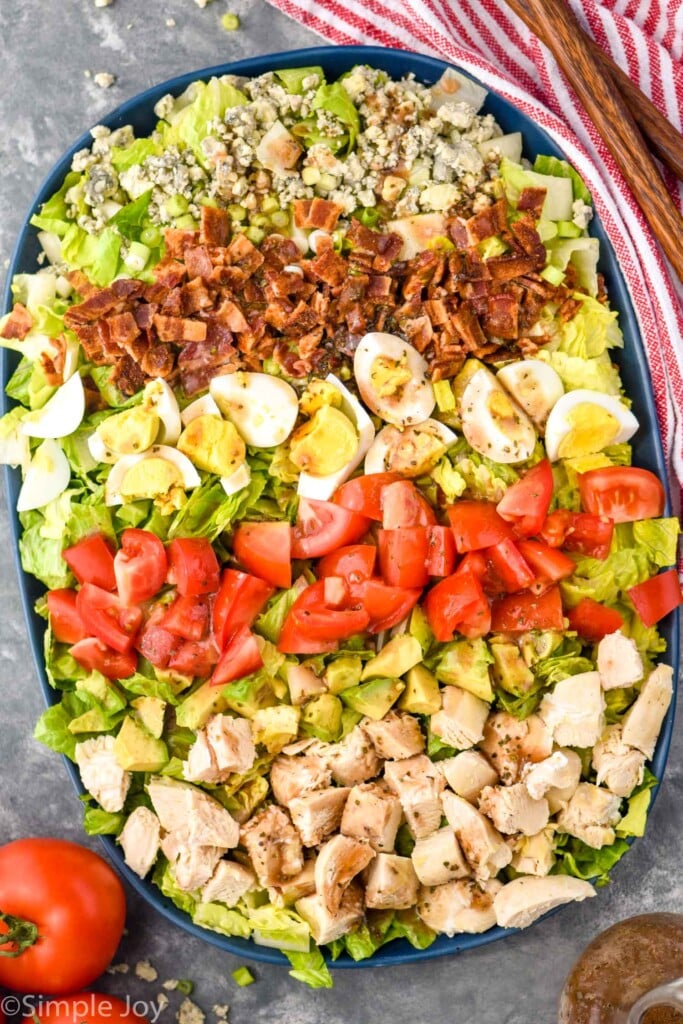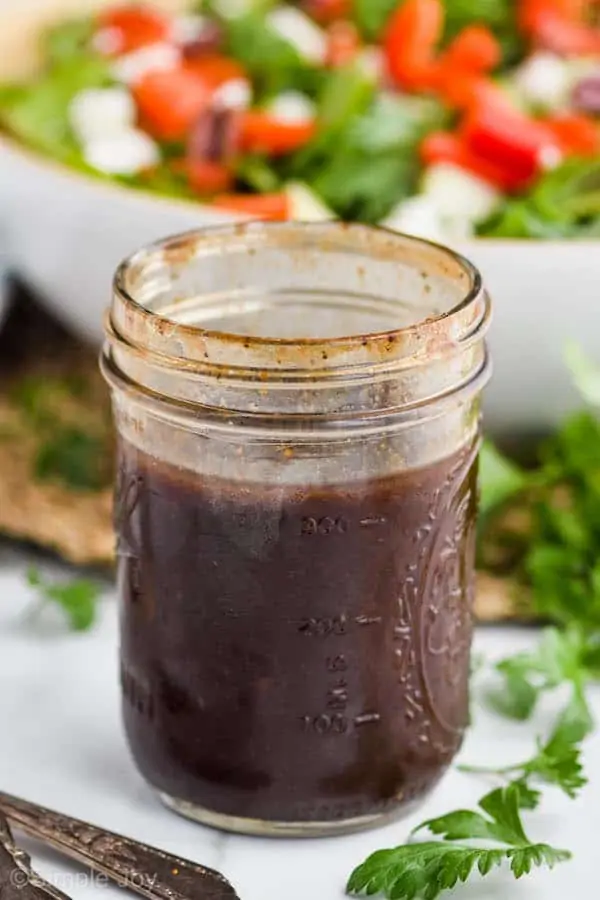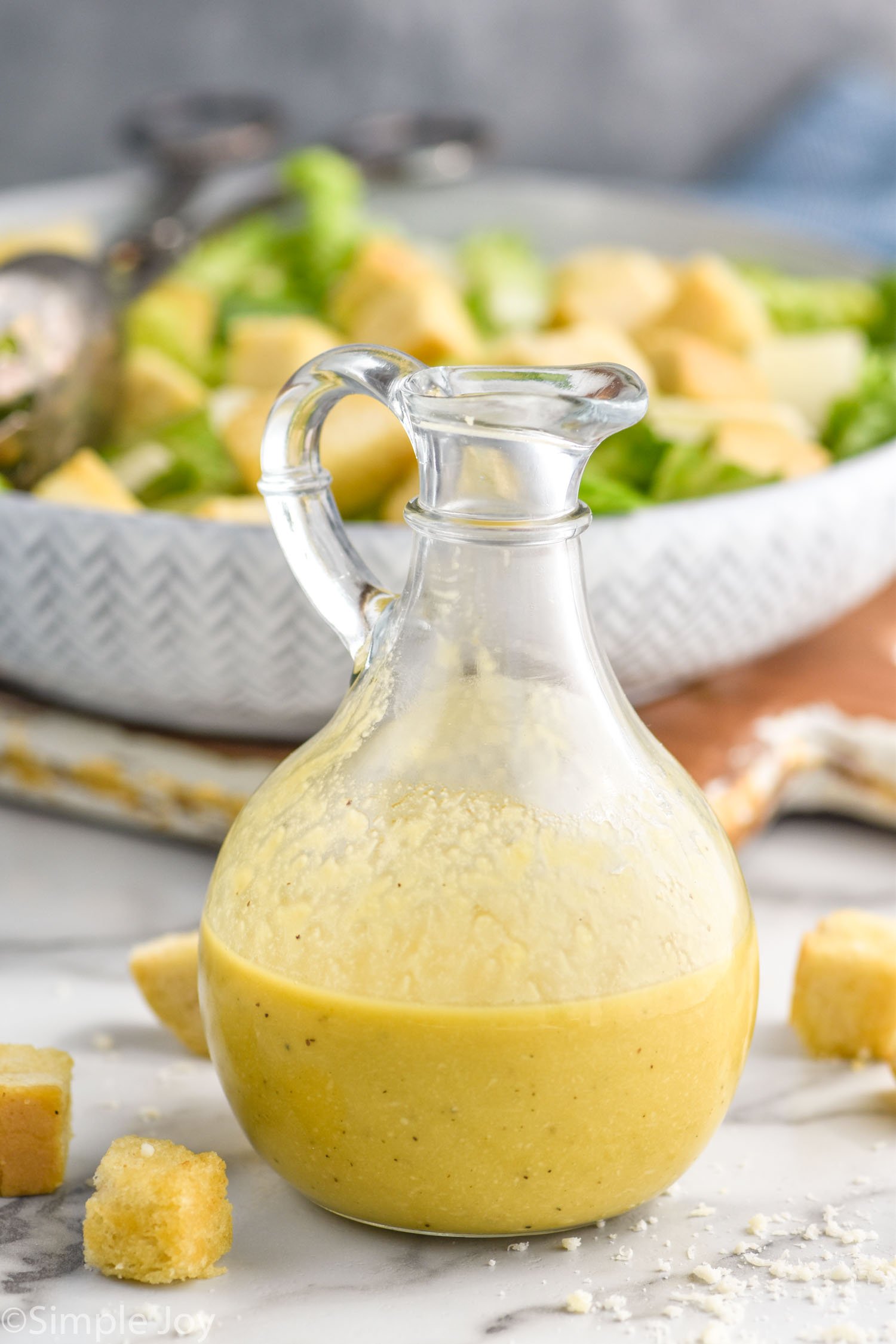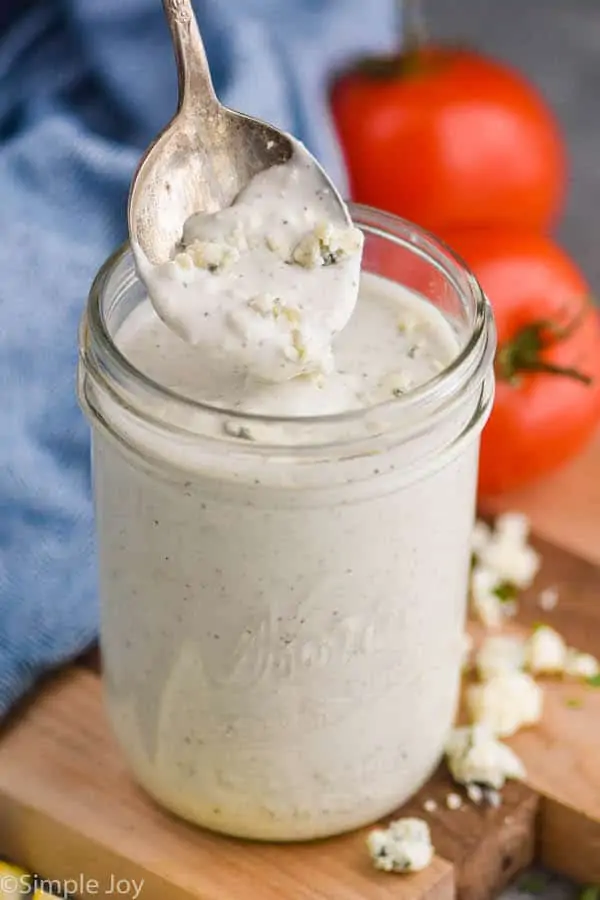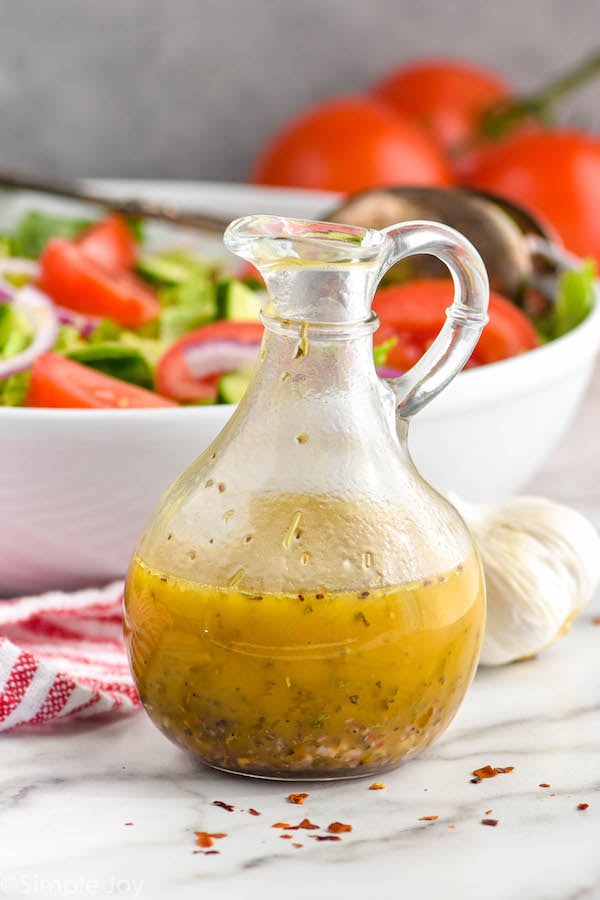Letting Dressing Rest
While this salad dressing can be used right away, letting it sit overnight in the refrigerator to rest allows the flavors to really meld. This makes the flavor of the dressing even better. You will love my tips and tricks for this recipe. Don’t miss the section on how to keep it from separating and how to make it a little lighter.
Red wine vinegar: A type of vinegar made from red wine that undergoes a fermentation process where bacteria convert the alcohol in red wine into acetic acid. The result is a tangy and flavorful vinegar with a distinctive red or deep amber color. Mayonnaise: Functions as an emulsifying agent, ensuring the vinegar and oil stay well-blended. Even if you’re not a fan of mayo, the amount used in this recipe is so minimal that it won’t affect the taste at all. Extra virgin olive oil: Opt for a high-quality extra virgin olive oil since it makes up the main portion of the dressing. Read more about this ingredient below. Dijon mustard: Adds a zesty flavor to the vinaigrette. Garlic cloves: Enhances the overall flavor of the dressing. Oregano: Dried herbs tend to combine into salad dressings better than fresh. Sugar: Counteracts the tanginess of the vinegar, adding just enough sweetness to enhance the flavor. Salt and pepper: Enhances and brings out the natural flavors of the other ingredients.
Simply blend a small dollop of mayonnaise with the vinegar. The magic lies in mayonnaise acting as an emulsifier – a nifty chemistry trick that brings together the oil and vinegar, preventing any separation. It acts like a bridge. While the mayo isn’t mandatory, it serves as a reliable binder without altering the flavor of the dressing. Additionally, it ensures your dressing remains well-integrated even when chilling in the refrigerator, preventing any unwanted solidification. For cooking purposes, regular olive oil is preferred because it has a higher smoke point and won’t burn as easily. I like to keep both on hand in my kitchen.
How to Use Red Wine Vinaigrette
Not only can this dressing top your favorite salads (I love it on my Cobb salad), but it can also be added to wraps, pasta salad, or even used as a marinade for chicken.
Storing Vinaigrette
This red wine vinaigrette recipe is best made the day before so it has time to rest and for the flavors to combine. It can be stored for up to four days in the refrigerator in an airtight container. All homemade salad dressings should be stored in the refrigerator, even if they don’t have mayonnaise. Give it a good shake or whisk the dressing before adding it to your salads. Remember to use your best judgment– if a dressing looks, smells, or tastes off, it’s best to err on the side of caution and prepare a fresh batch.
Strawberry Salad Dressing Ginger Dressing The Best Ranch Dressing Recipe
